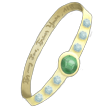Rune Introduction module
A presentation of runic magic
What is runic magic?
Definition
Runic magic is the combination of a symbolic language and geometric patterns to affect the flow and properties of magic. In France, this symbolic language is called runes and is based on a mix of ancient Germanic and Gallic scripts in which each symbol has a range of specific symbolic meanings.
Importance of runic magic
With enchantment and alchemy, runic magic form the trinity at the base of all modern-day "supported" magic (in contrast to raw magic). However, contrary to the other two, runic magic has the reputation of being complex and dangerous, as it involved a lot of arithmetic and geometry as well as impeccable drawing skills, and any tiny mistake can results in big accidents.
Runic magic vs other fields
Rune-based magic has a few advantages versus other fields of study:
Runic magic allows for the fixing and stabilisation of magic, and so for the casting more complex magic. For this reason, complex enchantments have to be supported by runes.
Runic magic allows for more efficient magic, guiding its flow through the proper shapes. For this reason, battle magic is always supported by runic artefacts rather than just practice through raw magic.
Main applications
Runic magic has two main applications:
Wards: Runes are traced on the ground or on building to affect an entire area with magic. In such case, they are considered to form a ward (e.g., protective wards, weather wards, mood wards, magic wards...). In particular, magic wards are used during the crafting of magical artefacts to alter their properties in the long terms.
Artefact crafting: Runes are traced on objects to alter them and/or their properties.
Rituals: Before the entire field was outlawed by His Majesty twenty years ago at the end of the Second Spanish Wars , runes were a fundamental part of rituals and the only thing offering us some measure of control over them.
Runic magic applied to the creation or breaking of wards is what you will learn in your rune courses in the first three years of the
officer track. To learn more about artefact crafting, you can take the corresponding optional specialisation module in your last two years.
Basic rules
Mandatory steps when working with runic magic:
- Design: On paper, with a first draft then an optimisation step.
- Tracing: Putting the chosen design on the ground/wall/object with chalk/paint/engraving...
- Check: Redo all calculations and carefully look for any potential tracing mistakes.
- Empowering: Putting magic inside the design for the first time.
- Activation: Of the empowered device.
Use of runes
- The script used for runic magic is not the same depending on practitioners' nationality and culture. As a rule, mixing language should never be attempted, as the geometric patterns used have to be specifically adapted to the runes alongside which they are placed and this would require an entirely new system to be created.
- Several runic practitioners working together allows for a higher speed in tracing and more powerful magic, and so it is a very popular practice in the military. However, this requires a special "multi-hand" adaptation of the runic design to take into account the joining of several minds with a potentially different understand of symbolism. As a rule, each practitioner will work on a different section of the design.
Geometric rules:
- A circle is the best protective shape and is at the base of almost all ward designs.
- When a ward is made of several circles, they must all share a common centre.
- The simplest containment wards are made of a simple circle surrounded by other shapes and runes, while the simplest personal wards have more tracing on the inside of the circle.
- A runic design is divided into different sections alongside the different circles that it contains.
- In theory, runic designs can be scaled up and down so long as all dimensions are multiplied by the same proportional factor. However, in practice some adaptations have to be made as small designs risk smushing the fines details while bigger design have risk of overflows.
- The tracing of the runic design is extremely precise, and in addition to calculations, it requires special tools such as rulers, compass or other tools adapted to the size of the tracing.
- The order in which the design is traced will impact the flow of magic. This should therefore be taken into account when planning a design, and this information should be checked when consulting a design you have not planned yourself. The information being absent does not mean that an order can be chosen freely.

The chalk, paint or other material used to form the runic design have to be carefully selected, as the
metal elements they are made of will impact the magic flowing through them. The materials can and often should differ in different section of the design, although it is not recommended for non expert to change materials in the middle of a line. Stones or gems can also be placed over or inside the runic design to further affect the flow and properties of the magic.
Fixer
As you might have heard, a fixer can be spray above the chalk to prevent it from being wiped without the proper cleaning agent. Beginners are very tempted to constantly use it, however it should be avoided as much as possible, as despite being made with
neutral elements it nevertheless still interferes with the flow of magic through the runic design. Only experts with a full understanding of how to control and mitigate this impact should risk using a fixer.
Dangers!
The Drissoire incident
Some uncultured people long down on rune as being "mere drawings mixed with maths", but in experts' hands, runic magic can be extremely powerful—and extremely dangerous. Always keep in mind the
Drissoire incident and remember to do your homework and to never neglect basic practice!
Types of mistakes:
Energy builds up. It can overwhelm the lines and blow up in the caster's face
Energy leaks out of the design, making it inefficient. This can also exhaust the caster before their objective has been reached or damage the environment where the magic is being practiced.
Faculty
Mistress Adélaïde Jameux: Officer track, "Basic Runes" (1st year class) and "Intermediate Runes" (2nd year class).
Master Germaline Tellier: Officer track, "Advanced Runes" (3rd year class), "Further Rune Topics - Runic Knots" (Mastery level class).
Master Isadora Laguillon: Officer track, "Further Rune Topics - Runic Sewing" (Mastery level class), "Further Rune Topics - Complex Design" (Mastery level class).










You're so good at magic systems. <3
Explore Etrea | WorldEmber 2025
Thank you! <3 With how central this one is for the plot of the novel I spent a lot more time than usual designing it, but I ran out of time during WE to put all the info here (I need to reread my entire novel to find everything). I'll have to update it later...